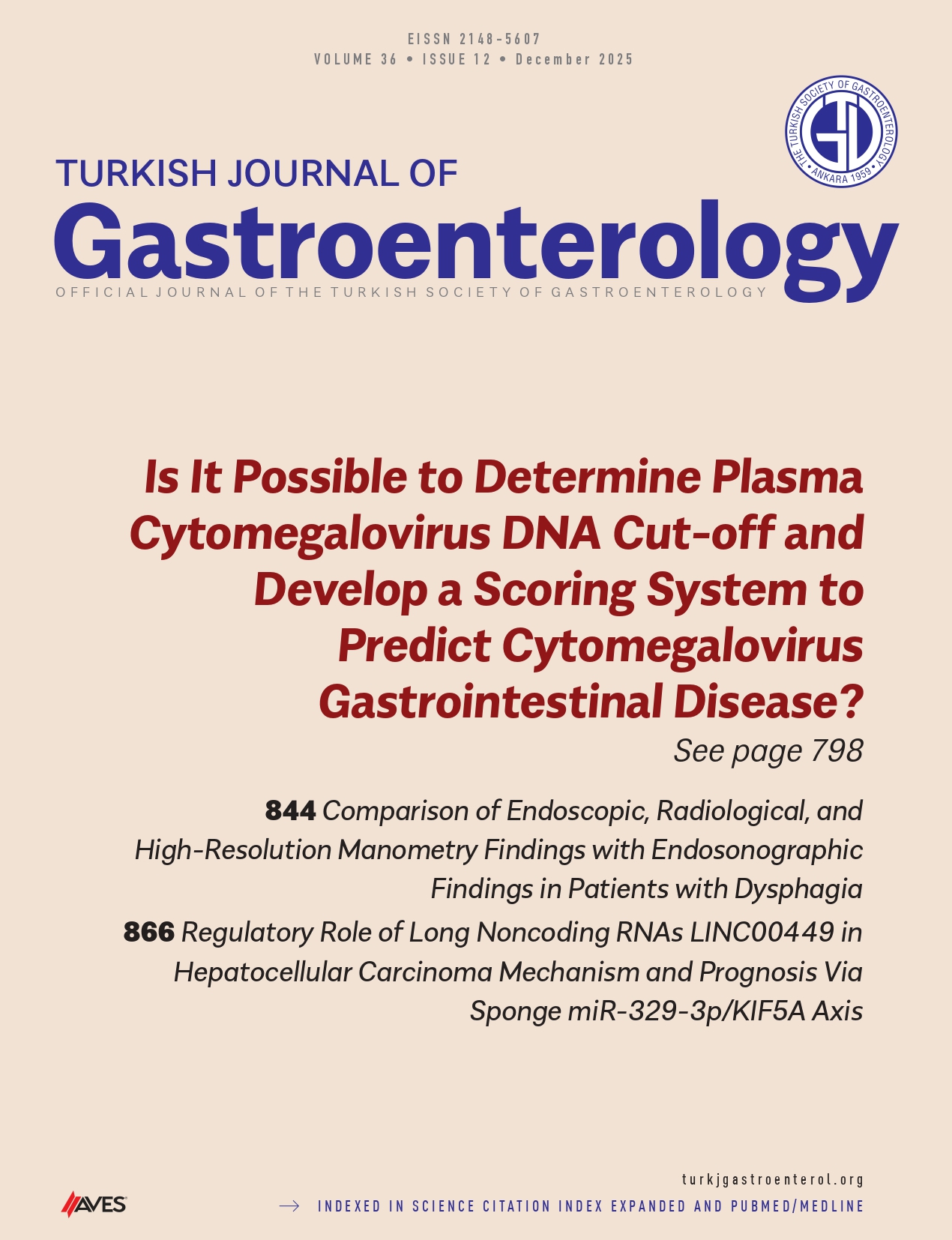Background/Aims: The aim of this study was to assess the clinical and sociodemographic risk factors of Helicobacter pylori infection and antibiotic resistance in the eastern Black Sea region of Turkey.
Materials and Methods: In total, 344 patients with dyspeptic symptoms who completed an extended questionnaire were enrolled in the study. Diagnosis of H. pylori infection was made by rapid urease test, histopathological investigation, and culture. Susceptibility of H. pylori strains was assessed by agar dilution (amoxicillin, tetracycline, metronidazole, levofloxacin) and E-test (clarithromycin) methods.
Results: The H. pylori positivity rate was 40.4% (139/344). Logistic regression analysis indicated that age and the presence of duodenal ulcer were independent risk factors associated with H. pylori positivity (odds ratio (OR): 0.96, 95% CI: 0.93–0.99, p=0.013; OR: 5.42, 95% CI: 1.96–14.98, p=0.001, respectively). Of 104 H. pylori-positive cultures, 43 strains (41%) were susceptible to all antibiotics, whereas 61 (59%) were resistant to at least one antibiotic. H. pylori resistance rates were 34% for levofloxacin, 31.1% for metronidazole, 28.2% for clarithromycin, 2.9% for amoxicillin, and 1% for tetracycline. Logistic regression analysis indicated that previous use of clarithromycin was the only independent risk factor for H. pylori resistance (OR: 6.25, 95% CI: 1.59-24.52, p=0.009).
Conclusion: An understanding of the risk factors for H. pylori positivity and antibiotic resistance in an extended anamnesis may affect treatment choice and facilitate H. pylori eradication. In regions where antibiotic resistance rates are elevated, performing antibiotic susceptibility tests may lead to effective eradication treatment.
Cite this article as: Erkut M, Uzun DY, Kaklıkkaya N, et al. Sociodemographic characteristics and clinical risk factors of Helicobacter pylori infection and antibiotic resistance in the Eastern Black Sea region of Turkey. Turk J Gastroenterol 2020; 31(3): 221-33.




.png)
.png)